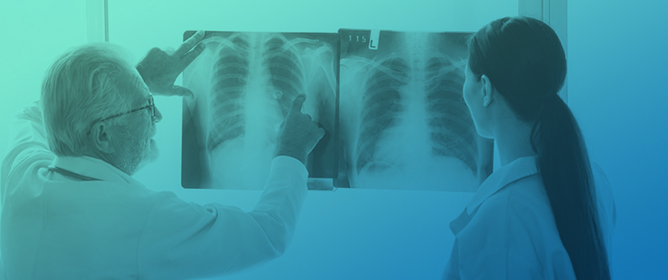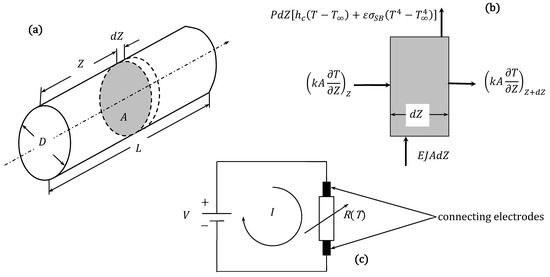Journal Description
J — Multidisciplinary Scientific Journal
J
— Multidisciplinary Scientific Journal is an international, peer-reviewed, open access journal on all natural and applied sciences, published quarterly online by MDPI. Our goal is to improve fast dissemination of new research results and ideas, and to allow research groups to build new studies, innovations and knowledge without delay.
- Open Access— free for readers, with article processing charges (APC) paid by authors or their institutions.
- High Visibility: indexed within FSTA, CAPlus / SciFinder, RePEc, and other databases.
- Rapid Publication: manuscripts are peer-reviewed and a first decision is provided to authors approximately 24.5 days after submission; acceptance to publication is undertaken in 6.8 days (median values for papers published in this journal in the second half of 2023).
- Recognition of Reviewers: reviewers who provide timely, thorough peer-review reports receive vouchers entitling them to a discount on the APC of their next publication in any MDPI journal, in appreciation of the work done.
Latest Articles
Electrothermal Instabilities in Barium-Titanate-Based Ceramics
J 2024, 7(2), 153-168; https://doi.org/10.3390/j7020009 (registering DOI) - 26 Apr 2024
Abstract
►
Show Figures
An electrothermal analysis for barium-titanate-based ceramics is presented, combining the Heywang–Jonker model for the electric resistivity with a heat dissipation mechanism based on natural convection and radiation in a one-dimensional model on the device level with voltage as the control parameter. Both positive-temperature-coefficient
[...] Read more.
An electrothermal analysis for barium-titanate-based ceramics is presented, combining the Heywang–Jonker model for the electric resistivity with a heat dissipation mechanism based on natural convection and radiation in a one-dimensional model on the device level with voltage as the control parameter. Both positive-temperature-coefficient (PTC) and negative temperature coefficient (NTC) effects are accounted for through the double Schottky barriers at the grain boundaries of the material. The problem formulated in this way admits uniform and non-uniform multiple-steady-state solutions that do not depend on the external circuit. The numerical bifurcation analysis reveals that the PTC effect gives rise to several multiplicites above the Curie point, whereas the NTC effect is responsible for the thermal runaway (temperature blowup). The thermal runaway phenomenon as a potential thermal shock could be among the possible reasons for the observed thermomechanical failures (delamination fracture). The theoretical results for the NTC regime and the thermal runaway are in agreement with the experimental flash sintering results obtained for barium titanate, and 3% and 8% yttria-stabilized zirconia.
Full article
Open AccessArticle
Dependence on Tail Copula
by
Paramahansa Pramanik
J 2024, 7(2), 127-152; https://doi.org/10.3390/j7020008 - 03 Apr 2024
Abstract
In real-world scenarios, we encounter non-exchangeable dependence structures. Our primary focus is on identifying and quantifying non-exchangeability in the tails of joint distributions. The findings and methodologies presented in this study are particularly valuable for modeling bivariate dependence, especially in fields where understanding
[...] Read more.
In real-world scenarios, we encounter non-exchangeable dependence structures. Our primary focus is on identifying and quantifying non-exchangeability in the tails of joint distributions. The findings and methodologies presented in this study are particularly valuable for modeling bivariate dependence, especially in fields where understanding dependence patterns in the tails is crucial, such as quantitative finance, quantitative risk management, and econometrics. To grasp the intricate relationship between the strength of dependence and various types of margins, we explore three fundamental tail behavior patterns for univariate margins. Capitalizing on the probabilistic features of tail non-exchangeability structures, we introduce graphical techniques and statistical tests designed for analyzing data that may manifest non-exchangeability in the joint tail. The effectiveness of the proposed approaches is illustrated through a simulation study and a practical example.
Full article
(This article belongs to the Section Computer Science & Mathematics)
►▼
Show Figures
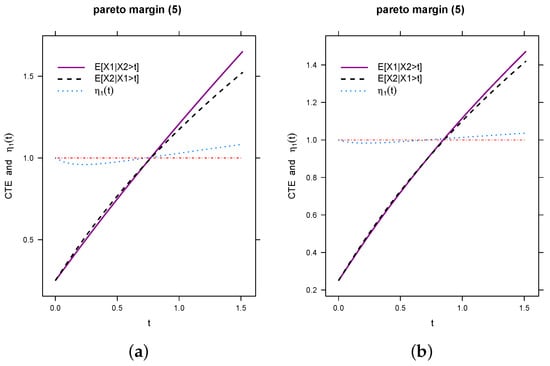
Figure 1
Open AccessArticle
Genome Doubling of Northern Spicebush, Lindera benzoin L.
by
Ramsey F. Arram, Thomas B. Morgan, John T. Nix, Yu-Lin Kao and Hsuan Chen
J 2024, 7(2), 116-126; https://doi.org/10.3390/j7020007 - 22 Mar 2024
Abstract
Lindera benzoin is a dioecious understory shrub native to eastern North America. Northern spicebush is a beautiful shrub with a natural round shrub shape, golden-yellow fall foliage, attractive bright red drupes, and precocious yellow flowers in early spring; however, its market value as
[...] Read more.
Lindera benzoin is a dioecious understory shrub native to eastern North America. Northern spicebush is a beautiful shrub with a natural round shrub shape, golden-yellow fall foliage, attractive bright red drupes, and precocious yellow flowers in early spring; however, its market value as an ornamental value has been overlooked. To improve the ornamental values of this under-cultivated nursery crop, breeding for a better compact form, larger leaves, enlarged flower clusters and fruit, and increased stress tolerances could all be beneficial. Polyploidy manipulation is a valuable method to improve such traits for many ornamental plants. This study established the genome doubling method by oryzalin-infused solid agar treatment on young northern spicebush seedlings. The seedlings of two wild populations in North Carolina were collected and used. A total of 288 seedlings were treated with solid agar containing 150 µM oryzalin for 24, 72, and 120 h. The results were sporadic in their survival ratios and tetraploid conversion ratios between different treatments; however, a total of 16 tetraploid L. benzoin plants were produced in this study. The 24-h treatment showed the optimal result, with 7.1% of total treated seedlings or 15.2% of surviving seedlings converted into tetraploids. Tetraploid plants had visible differences in leaf morphology, a statistically significant enlarged stomata size, and reduced stomatal density compared to diploid plants. This research provides ploidy manipulation information for all future breeding processes of L. benzoin and related species.
Full article
(This article belongs to the Special Issue Feature Papers of J—Multidisciplinary Scientific Journal in 2024)
►▼
Show Figures
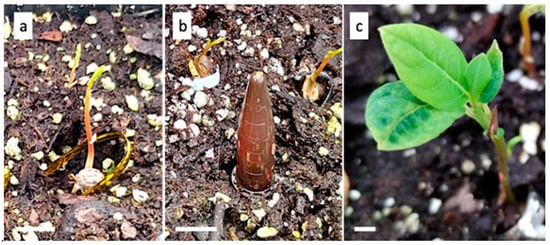
Figure 1
Open AccessReview
Self-Defense Mechanism in Rice to Salinity: Proline
by
Yunus Emre Koc, Murat Aycan and Toshiaki Mitsui
J 2024, 7(1), 103-115; https://doi.org/10.3390/j7010006 - 11 Mar 2024
Abstract
The increasing global population and climate change threaten food security, with the need for sustenance expected to rise by 85% by 2050. Rice, a crucial staple food for over 50% of the global population, is a major source of calories in underdeveloped and
[...] Read more.
The increasing global population and climate change threaten food security, with the need for sustenance expected to rise by 85% by 2050. Rice, a crucial staple food for over 50% of the global population, is a major source of calories in underdeveloped and developing countries. However, by the end of the century, over 30% of rice fields will become saline due to soil salinity caused by earthquakes, tsunamis, and rising sea levels. Plants have developed strategies to deal with salt stress, such as ion homeostasis, antioxidant defense mechanisms, and morphological adaptations. Proline, an endogenous osmolyte, is the predominant endogenous osmolyte that accumulates in response to salinity, and its overexpression in rice plants has been observed to increase plant salinity tolerance. Exogenously applied proline has been shown to improve plant salt tolerance by reducing the destructive effect of salinity. Recent research has focused on ionic toxicity, nitrogen fixation, and gene expression related to salt tolerance. Exogenous proline has been shown to improve water potential and leaf content, restoring water usage efficiency. It can also ease growth inhibition in salt-sensitive plants. Exogenously applied proline increases antioxidant activities and enhances plant salinity tolerance. This review examines the role and processes of proline in rice plants under salt stress and its relationship with other tolerance mechanisms.
Full article
(This article belongs to the Section Biology & Life Sciences)
►▼
Show Figures

Figure 1
Open AccessCase Report
Medial Patellofemoral Ligament and Lateral Patellofemoral Ligament Reconstruction after Tibial Tuberosity Transposition in a Young Woman with Patellar Instability
by
Jakob Merkač and Mateja Sirše
J 2024, 7(1), 94-102; https://doi.org/10.3390/j7010005 - 24 Feb 2024
Abstract
►▼
Show Figures
In patients with reccurent lateral and medial patellar instability, isolated medial patellofemoral ligament (MPFL) reconstruction may be insufficient due to poor lateral retinacular tissue quality. In this report, we describe a case of a patient that underwent simultaneous MPFL and lateral patellofemoral ligament
[...] Read more.
In patients with reccurent lateral and medial patellar instability, isolated medial patellofemoral ligament (MPFL) reconstruction may be insufficient due to poor lateral retinacular tissue quality. In this report, we describe a case of a patient that underwent simultaneous MPFL and lateral patellofemoral ligament (LPFL) reconstruction on the left knee due to chronic bidirectional patellar instability. A 29-year-old female patient presented with first-time lateral patellar dislocation five years ago due to acute strain. She underwent a tibial tuberosity transposition in another hospital. After the surgery, she suffered from recurrent medial and lateral patellar dislocation and presented to our center. MPFL and concomitant LPFL reconstruction on the left knee was simultaneously performed due to bilateral patellar dislocation. The patella was stable postoperatively, and the patient underwent physiotherapy with successful results to date. Single-time patellar dislocation should be treated conservatively. Surgical treatment after the first episode of dislocation can magnitude the risk of postoperative complications. The simultaneous reconstructing of the LPFL yields patellar fixation indistinguishable from the native LPFL. These grafts provide separate tensioning depending on body anatomy, allowing for individualized stability. Anatomical MPFL reconstruction is supported by well-established high-quality research. Reconstructing the LPFL anatomically yields patellar fixation indistinguishable from the native LPFL.
Full article
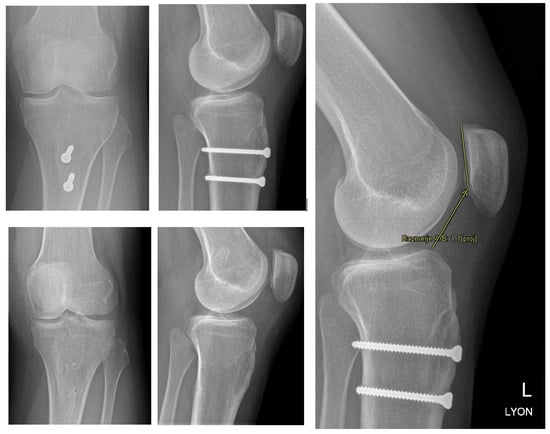
Figure 1
Open AccessArticle
Aerodynamic Modification of High-Rise Buildings by the Adjoint Method
by
Amirfarhang Nikkhoo, Ali Esmaeili, Shayan Rabizade and Majid Zamiri
J 2024, 7(1), 72-93; https://doi.org/10.3390/j7010004 - 05 Feb 2024
Abstract
This study presents a novel numerical methodology that is designed for the dynamic adjustment of three-dimensional high-rise building configurations in response to aerodynamic forces. The approach combines two core components: a numerical simulation of fluid flow and the adjoint method. Through a comprehensive
[...] Read more.
This study presents a novel numerical methodology that is designed for the dynamic adjustment of three-dimensional high-rise building configurations in response to aerodynamic forces. The approach combines two core components: a numerical simulation of fluid flow and the adjoint method. Through a comprehensive sensitivity analysis, the influence of individual variables on aerodynamic loads, including lift and drag coefficients, is assessed. The findings underscore that the architectural design, specifically the building’s construction pattern, exerts the most substantial impact on these forces, accounting for a substantial proportion (76%). Consequently, the study extends its evaluation to the sensitivity of fluid flow across various sections of the tower by solving the adjoint equation throughout the entire fluid domain. As a result, the derived sensitivity vector indicates a remarkable reduction of approximately 31% in the applied loads on the tower. This notable improvement has significant implications for the construction of tall buildings, as it effectively mitigates aerodynamic forces, ultimately enhancing the overall comfort and structural stability of these architectural marvels.
Full article
(This article belongs to the Section Engineering)
►▼
Show Figures
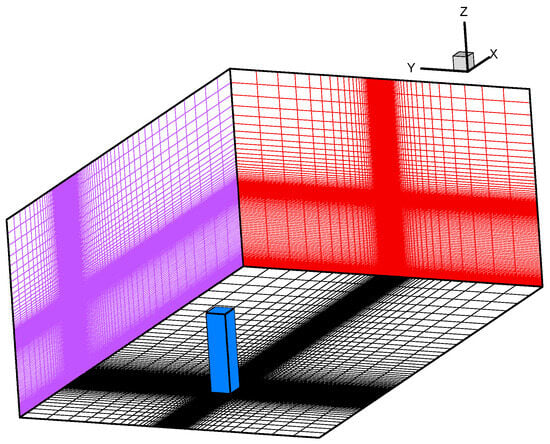
Figure 1
Open AccessArticle
An Advanced Deep Learning Framework for Multi-Class Diagnosis from Chest X-ray Images
by
Maria Vasiliki Sanida, Theodora Sanida, Argyrios Sideris and Minas Dasygenis
J 2024, 7(1), 48-71; https://doi.org/10.3390/j7010003 - 22 Jan 2024
Cited by 1
Abstract
Chest X-ray imaging plays a vital and indispensable role in the diagnosis of lungs, enabling healthcare professionals to swiftly and accurately identify lung abnormalities. Deep learning (DL) approaches have attained popularity in recent years and have shown promising results in automated medical image
[...] Read more.
Chest X-ray imaging plays a vital and indispensable role in the diagnosis of lungs, enabling healthcare professionals to swiftly and accurately identify lung abnormalities. Deep learning (DL) approaches have attained popularity in recent years and have shown promising results in automated medical image analysis, particularly in the field of chest radiology. This paper presents a novel DL framework specifically designed for the multi-class diagnosis of lung diseases, including fibrosis, opacity, tuberculosis, normal, viral pneumonia, and COVID-19 pneumonia, using chest X-ray images, aiming to address the need for efficient and accessible diagnostic tools. The framework employs a convolutional neural network (CNN) architecture with custom blocks to enhance the feature maps designed to learn discriminative features from chest X-ray images. The proposed DL framework is evaluated on a large-scale dataset, demonstrating superior performance in the multi-class diagnosis of the lung. In order to evaluate the effectiveness of the presented approach, thorough experiments are conducted against pre-existing state-of-the-art methods, revealing significant accuracy, sensitivity, and specificity improvements. The findings of the study showcased remarkable accuracy, achieving 98.88%. The performance metrics for precision, recall, F1-score, and Area Under the Curve (AUC) averaged 0.9870, 0.9904, 0.9887, and 0.9939 across the six-class categorization system. This research contributes to the field of medical imaging and provides a foundation for future advancements in DL-based diagnostic systems for lung diseases.
Full article
(This article belongs to the Special Issue Integrating Generative AI with Medical Imaging)
►▼
Show Figures
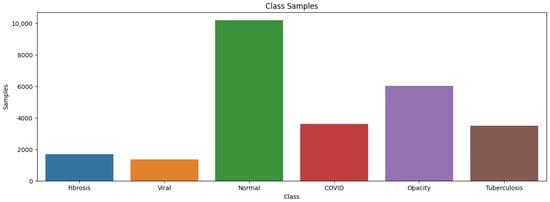
Figure 1
Open AccessArticle
Blockchain in Smart Grids: A Bibliometric Analysis and Scientific Mapping Study
by
Georgios Lampropoulos
J 2024, 7(1), 19-47; https://doi.org/10.3390/j7010002 - 06 Jan 2024
Abstract
►▼
Show Figures
To achieve sustainability and fulfill sustainable development goals, the digitalization of the power sector is vital. This study aims to examine how blockchain can be integrated into and enrich smart grids. In total, 10 research questions are explored. Scopus and Web of Science
[...] Read more.
To achieve sustainability and fulfill sustainable development goals, the digitalization of the power sector is vital. This study aims to examine how blockchain can be integrated into and enrich smart grids. In total, 10 research questions are explored. Scopus and Web of Science (WoS) were used to identify documents related to the topic. The study involves the analysis of 1041 scientific documents over the period 2015–2022. The related studies are analyzed from different dimensions including descriptive statistics, identification of the most common keywords and most widely used outlets, examination of the annual scientific production, the analysis of the most impactful and productive authors, countries, and affiliations. The advancement of the research focus and the most popular topics are also examined. Additionally, the results are analyzed, the main findings are discussed, open issues and challenges are presented, and suggestions for new research directions are provided. Based on the results, it was evident that blockchain plays a vital role in securing smart grids and realizing power sector digitalization, as well as in achieving sustainability and successfully meeting sustainable development goals.
Full article
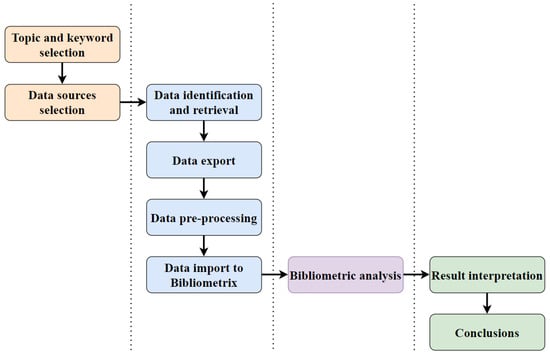
Figure 1
Open AccessReview
An Overview of Mathematical Methods Applied in the Biomechanics of Foot and Ankle–Foot Orthosis Models
by
Hasan Mhd Nazha, Szabolcs Szávai and Daniel Juhre
J 2024, 7(1), 1-18; https://doi.org/10.3390/j7010001 - 22 Dec 2023
Abstract
►▼
Show Figures
Ankle–foot orthoses (AFOs) constitute medical instruments designed for patients exhibiting pathological gait patterns, notably stemming from conditions such as stroke, with the primary objective of providing support and facilitating rehabilitation. The present research endeavors to conduct a comprehensive review of extant scholarly literature
[...] Read more.
Ankle–foot orthoses (AFOs) constitute medical instruments designed for patients exhibiting pathological gait patterns, notably stemming from conditions such as stroke, with the primary objective of providing support and facilitating rehabilitation. The present research endeavors to conduct a comprehensive review of extant scholarly literature focusing on mathematical techniques employed for the examination of AFO models. The overarching aim is to gain deeper insights into the biomechanical intricacies underlying these ankle–foot orthosis models from a mathematical perspective, while concurrently aiming to advance novel models within the domain. Utilizing a specified set of keywords and their configurations, a systematic search was conducted across notable academic databases, including ISI Web of Knowledge, Google Scholar, Scopus, and PubMed. Subsequently, a total of 23 articles were meticulously selected for in-depth review. These scholarly contributions collectively shed light on the utilization of nonlinear optimization techniques within the context of ankle–foot orthoses (AFOs), specifically within the framework of fully Cartesian coordinates, encompassing both kinematic and dynamic dimensions. Furthermore, an exploration of a two-degree-of-freedom AFO design tailored for robotic rehabilitation, which takes into account the interplay between foot and orthosis models, is delineated. Notably, the review article underscores the incorporation of shape memory alloy (SMA) elements in AFOs and overviews the constitutive elastic, viscoelastic, and hyperelastic models. This comprehensive synthesis of research findings stands to provide valuable insights for orthotists and engineers, enabling them to gain a mathematical understanding of the biomechanical principles underpinning AFO models and fostering the development of innovative AFO designs.
Full article

Figure 1
Open AccessArticle
A Comparative Study of Finite Element Method and Hybrid Finite Element Method–Spectral Element Method Approaches Applied to Medium-Frequency Transformers with Foil Windings
by
Siamak Pourkeivannour, Joost S. B. van Zwieten, Léo A. J. Friedrich, Mitrofan Curti and Elena A. Lomonova
J 2023, 6(4), 627-638; https://doi.org/10.3390/j6040041 - 13 Dec 2023
Cited by 1
Abstract
This study aims to improve the computational efficiency of the frequency domain analysis of medium-frequency transformers (MFTs) with the presence of large clearance distances and fine foil windings. The winding loss and magnetic energy in MFTs in the medium-frequency range are calculated utilizing
[...] Read more.
This study aims to improve the computational efficiency of the frequency domain analysis of medium-frequency transformers (MFTs) with the presence of large clearance distances and fine foil windings. The winding loss and magnetic energy in MFTs in the medium-frequency range are calculated utilizing a finite element method (FEM) using common triangular and alternative rectilinear mesh elements. Additionally, in order to improve the computational efficiency of the calculations, a spectral element method (SEM) is coupled with a FEM, thus creating a hybrid FEM–SEM formulation. In such a hybrid approach, the FEM is used to calculate the current density distribution in the two-dimensional (2D) cross-section of the foil conductors to achieve reliable accuracy, and the SEM is adopted in the nonconducting clearance distances of the winding window to reduce the system of equations. The comparative analysis of the calculated resistance and reactance of the under-study models showed that the FEM with rectilinear mesh elements and the FEM–SEM model outperformed the FEM with triangular mesh elements in terms of accuracy and computational cost. The hybrid FEM–SEM model enables a reduced system of equations for modeling the electromagnetic behavior of MFTs. This research provides valuable insights into both the computational approaches and meshing challenges in the analysis of MFTs and offers a foundation for future research on the design and optimization of MFTs.
Full article
(This article belongs to the Section Engineering)
►▼
Show Figures

Figure 1
Open AccessArticle
Relationship between Plasma Lipopolysaccharide Concentration and Health Status in Healthy Subjects and Patients with Abnormal Glucose Metabolism in Japan: A Preliminary Cross-Sectional Study
by
Nobuo Fuke, Shojiro Sawada, Takahiro Ito-Sasaki, Kumi Y. Inoue, Yusuke Ushida, Ikuo Sato, Tomokazu Matsue, Hideki Katagiri, Hiroyuki Ueda and Hiroyuki Suganuma
J 2023, 6(4), 605-626; https://doi.org/10.3390/j6040040 - 30 Nov 2023
Abstract
Lipopolysaccharides are components of Gram-negative bacteria. The relationship between blood lipopolysaccharide levels and health status has mainly been investigated in Europe, and there is a lack of information about Asia, particularly Japan. This study aimed to investigate the relationship between blood lipopolysaccharide levels
[...] Read more.
Lipopolysaccharides are components of Gram-negative bacteria. The relationship between blood lipopolysaccharide levels and health status has mainly been investigated in Europe, and there is a lack of information about Asia, particularly Japan. This study aimed to investigate the relationship between blood lipopolysaccharide levels and health status in the Japanese. We conducted two cross-sectional studies in 36 healthy subjects (Study 1) and 36 patients with abnormal glucose metabolism (AGM; Study 2). The plasma lipopolysaccharide concentration in healthy subjects was positively correlated with body mass index. The plasma lipopolysaccharide concentration in AGM patients was obviously higher than that in healthy subjects. Furthermore, in AGM patients, the plasma lipopolysaccharide concentration was positively correlated with C-peptide, fasting plasma glucose levels, triglycerides, and stage of diabetic nephropathy. The plasma lipopolysaccharide concentration was also negatively correlated with 20/(C-peptide × fasting plasma glucose), an indicator of insulin resistance, and high-density lipoprotein cholesterol. In particular, the correlation between plasma lipopolysaccharide concentration and triglycerides in AGM patients was maintained in multiple regression analyses adjusted for age, sex, or body mass index. These results suggest a possible role of lipopolysaccharides in obesity in healthy subjects and in the deterioration of triglyceride metabolism in AGM patients in the Japanese population.
Full article
(This article belongs to the Section Public Health & Healthcare)
►▼
Show Figures

Figure 1
Open AccessArticle
Antioxidant Activity of Selected Medicinal Plants Used by Traditional Herbal Practitioners to Treat Cancer in Malawi
by
Friday Fosta Fred Masumbu, John Finias Kamanula, Anthony Mwakikunga, Bonface Mwamatope and David Tembo
J 2023, 6(4), 592-604; https://doi.org/10.3390/j6040039 - 20 Nov 2023
Abstract
This study evaluated the phytochemical composition and antioxidant activity of Piliostigma thonningii (Schumach.) Milne-Redh, Psorospermum febrifugum Spach, Inula glomerata Oliv. and Hiern, Zanthoxylum chalybeum Engl. and Monotes africanus A.DC., claimed to treat cancer by Malawian traditional herbal practitioners. Ground and dried plant extracts
[...] Read more.
This study evaluated the phytochemical composition and antioxidant activity of Piliostigma thonningii (Schumach.) Milne-Redh, Psorospermum febrifugum Spach, Inula glomerata Oliv. and Hiern, Zanthoxylum chalybeum Engl. and Monotes africanus A.DC., claimed to treat cancer by Malawian traditional herbal practitioners. Ground and dried plant extracts were analyzed for total phenolic content (TPC), total flavonoid content (TFC), total alkaloid content (TAC), ferric reducing antioxidant power (FRAP) and 2,2-Diphenyl-1-Picrylhydrazyl (DPPH) using standard assays. The TPC, TFC, and TAC ranged from 539 ± 2.70 to 4602 ± 32 mg GAE/g DW, 6.18 ± 0.03 to 64.04 ± 0.16 mg QE/g DW and 19.25 ± 0.07 to 76.05 ± 0.36 mg CE/g DW, respectively, and the variations were significant, p < 0.05. FRAP values ranged from 82.15 ± 0.7 to 687.28 ± 0.71 mg TEAC/g DW and decreased in the following order: P. thoningii (Schumach.) Milne-Redh > P. febrifugum Spach > M. africanus A.DC > Z. chalybeum Engl > I. glomerata Oliv. and Hiern. The scavenging activity (SA50) of the extracts ranged from 0.09 ± 0.01 to 1.57 ± 0.01 μg/mL of extract with P. thonningii (Schumach.) Milne-Redh showing the lowest value. Based on the levels of phenolic compounds and their antioxidant activity, the plants in this study could be considered for use as medicinal agents and sources of natural bioactive compounds and antioxidants.
Full article
(This article belongs to the Special Issue Herbal Medicines: Current Advances and Clinical Prospects)
►▼
Show Figures

Figure 1
Open AccessArticle
Improving ISOMAP Efficiency with RKS: A Comparative Study with t-Distributed Stochastic Neighbor Embedding on Protein Sequences
by
Sarwan Ali and Murray Patterson
J 2023, 6(4), 579-591; https://doi.org/10.3390/j6040038 - 31 Oct 2023
Abstract
Data visualization plays a crucial role in gaining insights from high-dimensional datasets. ISOMAP is a popular algorithm that maps high-dimensional data into a lower-dimensional space while preserving the underlying geometric structure. However, ISOMAP can be computationally expensive, especially for large datasets, due to
[...] Read more.
Data visualization plays a crucial role in gaining insights from high-dimensional datasets. ISOMAP is a popular algorithm that maps high-dimensional data into a lower-dimensional space while preserving the underlying geometric structure. However, ISOMAP can be computationally expensive, especially for large datasets, due to the computation of the pairwise distances between data points. The motivation behind this study is to improve efficiency by leveraging an approximate method, which is based on random kitchen sinks (RKS). This approach provides a faster way to compute the kernel matrix. Using RKS significantly reduces the computational complexity of ISOMAP while still obtaining a meaningful low-dimensional representation of the data. We compare the performance of the approximate ISOMAP approach using RKS with the traditional t-SNE algorithm. The comparison involves computing the distance matrix using the original high-dimensional data and the low-dimensional data computed from both t-SNE and ISOMAP. The quality of the low-dimensional embeddings is measured using several metrics, including mean squared error (MSE), mean absolute error (MAE), and explained variance score (EVS). Additionally, the runtime of each algorithm is recorded to assess its computational efficiency. The comparison is conducted on a set of protein sequences, used in many bioinformatics tasks. We use three different embedding methods based on k-mers, minimizers, and position weight matrix (PWM) to capture various aspects of the underlying structure and the relationships between the protein sequences. By comparing different embeddings and by evaluating the effectiveness of the approximate ISOMAP approach using RKS and comparing it against t-SNE, we provide insights on the efficacy of our proposed approach. Our goal is to retain the quality of the low-dimensional embeddings while improving the computational performance.
Full article
Open AccessArticle
Photocatalytic Reduction of Cr(VI) and Pb(II) with Biogenically Synthesized Copper Oxide Nanoparticles Using an Extract of the Myriophyllum spicatum Plant
by
Opeyemi A. Oyewo and Seshibe S. Makgato
J 2023, 6(4), 564-578; https://doi.org/10.3390/j6040037 - 31 Oct 2023
Abstract
The biogenic synthesis of copper oxide nanoparticles was explored using the Myriophyllum spicatum plant through a process involving co-precipitation and was utilized as an effective photocatalyst for the reduction of Cr(VI) and Pb(II) ions in an aqueous solution. The plant-mediated CuO nanoparticles were
[...] Read more.
The biogenic synthesis of copper oxide nanoparticles was explored using the Myriophyllum spicatum plant through a process involving co-precipitation and was utilized as an effective photocatalyst for the reduction of Cr(VI) and Pb(II) ions in an aqueous solution. The plant-mediated CuO nanoparticles were characterized using microscopic techniques (TEM and SEM), FT-IR, and XRD analyses. The amount of the reduced metal ions was determined by UV–visible and Atomic Absorption (AA) spectrophotometers. The analyses of the functional group present in the leaf extract revealed the type of bioactive molecules that were involved in the formation of copper oxide nanoparticles. The nanoparticles were used in the photo-enhanced reduction of hexavalent Cr and divalent Pb ions, and the impact of solution pH, initial metal concentrations, and photocatalyst dosage was investigated to establish the optimal performance of the CuO nanoparticles. Results revealed a direct association between the reduction of metal ions and catalyst dosage in both cases. A maximum percentage reduction of 89.2% and 79.1% was achieved for Cr(VI) and Pb(II), respectively, using 3 g of the CuO nanoparticles. This confirms that the CuO nanoparticles exhibited higher efficiency for Cr(VI) reduction as compared to Pb(II) reduction and indicates that CuO nanoparticles are a promising photocatalyst that is capable of reducing these metal ions into less toxic products.
Full article
(This article belongs to the Topic Environmental and Health Impacts of Agro-Food Production and Consumption)
►▼
Show Figures

Figure 1
Open AccessArticle
Application of AI-Based Techniques on Moody’s Diagram for Predicting Friction Factor in Pipe Flow
by
Ritusnata Mishra and Chandra Shekhar Prasad Ojha
J 2023, 6(4), 544-563; https://doi.org/10.3390/j6040036 - 07 Oct 2023
Abstract
The friction factor is a widely used parameter in characterizing flow resistance in pipes and open channels. Recently, the application of machine learning and artificial intelligence (AI) has found several applications in water resource engineering. With this in view, the application of artificial
[...] Read more.
The friction factor is a widely used parameter in characterizing flow resistance in pipes and open channels. Recently, the application of machine learning and artificial intelligence (AI) has found several applications in water resource engineering. With this in view, the application of artificial intelligence techniques on Moody’s diagram for predicting the friction factor in pipe flow for both transition and turbulent flow regions has been considered in the present study. Various AI methods, like Random Forest (RF), Random Tree (RT), Support Vector Machine (SVM), M5 tree (M5), M5Rules, and REPTree models, are applied to predict the friction factor. While performing the statistical analysis (root-mean-square error (RMSE), mean absolute error (MAE), squared correlation coefficient (R2), and Nash–Sutcliffe efficiency (NSE)), it was revealed that the predictions made by the Random Forest model were the most reliable when compared to other AI tools. The main objective of this study was to highlight the limitations of artificial intelligence (AI) techniques when attempting to effectively capture the characteristics and patterns of the friction curve in certain regions of turbulent flow. To further substantiate this behavior, the conventional algebraic equation was used as a benchmark to test how well the current AI tools work. The friction factor estimates using the algebraic equation were found to be even more accurate than the Random Forest model, within a relative error of ≤±1%, in those regions where the AI models failed to capture the nature and variation in the friction factor.
Full article
(This article belongs to the Special Issue Multidisciplinary Advances in Water Resources Engineering: A Special Issue in Honor of Prof. Dr. Prabhata Kumar Swamee)
►▼
Show Figures
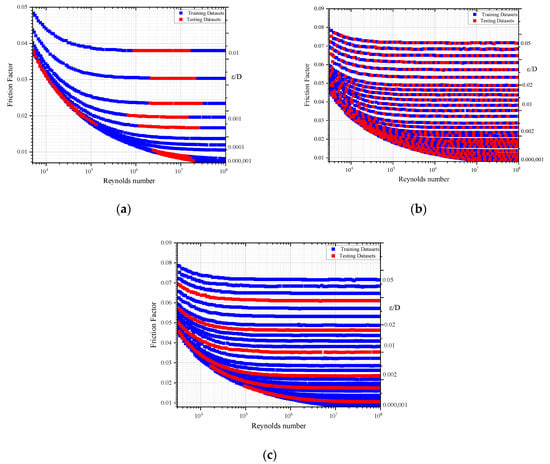
Figure 1
Open AccessCommunication
Non-Destructive Discrimination of Blue Inks on Suspected Documents through the Combination of Raman Spectroscopy and Chemometric Analysis
by
Sruthi Thiraviam Saravanan, Jaysiva Ganesamurthi, Shen-Ming Chen, Tse-Wei Chen, Chun-Jung Chen, Keseven Lakshmanan, Partheeban Chinnamuthu, Xiaoheng Liu and Ramachandran Balaji
J 2023, 6(4), 536-543; https://doi.org/10.3390/j6040035 - 26 Sep 2023
Abstract
►▼
Show Figures
Increasingly sophisticated techniques for falsifying and forging legal documents demand non-destructive and accurate analysis methods. Researchers have extensively investigated ink discrimination through an interdisciplinary analysis involving Raman spectroscopy and chemometrics, which is now regarded as a leading forensic document analysis approach. In this
[...] Read more.
Increasingly sophisticated techniques for falsifying and forging legal documents demand non-destructive and accurate analysis methods. Researchers have extensively investigated ink discrimination through an interdisciplinary analysis involving Raman spectroscopy and chemometrics, which is now regarded as a leading forensic document analysis approach. In this study, a groundbreaking method was developed to identify the specific origin of blue-ink pens used in written documents. By employing Raman spectroscopy in conjunction with principal component analysis (PCA), we successfully differentiated between 45 different blue-ink pens used on various documents. The Raman spectroscopy analysis provided a visual examination of each blue ink’s unique Raman signature, and PCA was then applied to the processed spectral data. Moreover, we successfully distinguished highly similar ink types in documents through the combined use of Raman spectroscopy, Pearson’s correlation analysis, and a statistical approach (PCA).
Full article
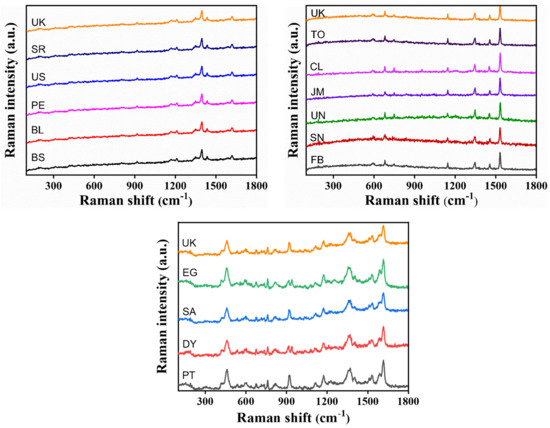
Figure 1
Open AccessArticle
Multiplicity Analysis of a Thermistor Problem—A Possible Explanation of Delamination Fracture
by
Rizos N. Krikkis
J 2023, 6(3), 517-535; https://doi.org/10.3390/j6030034 - 04 Sep 2023
Abstract
►▼
Show Figures
In the present study, a numerical bifurcation analysis of a PTC thermistor problem is carried out, considering a realistic heat dissipation mechanism due to conduction, nonlinear temperature-dependent natural convection, and radiation. The electric conductivity is modeled as a strongly nonlinear and smooth function
[...] Read more.
In the present study, a numerical bifurcation analysis of a PTC thermistor problem is carried out, considering a realistic heat dissipation mechanism due to conduction, nonlinear temperature-dependent natural convection, and radiation. The electric conductivity is modeled as a strongly nonlinear and smooth function of the temperature between two limiting values, based on measurements. The temperature field has been resolved for both cases were either the current or the voltage (nonlocal problem) is the controlling parameter. With the aid of an efficient continuation algorithm, multiple steady-state solutions that do not depend on the external circuit have been identified as a result of the inherent nonlinearities. The analysis reveals that the conduction–convection parameter and the type of the imposed boundary conditions have a profound effect on the solution structure and the temperature profiles. For the case of current control, depending on the boundary conditions, a complex and interesting multiplicity pattern appears either as a series of nested cusp points or as enclosed branches emanating from pitchfork bifurcation points. The stability analysis reveals that when the device edges are insulated, only the uniform solutions are stable, namely, one “cold” and one “hot”. A key feature of the “hot” state is that the corresponding temperature is proportional to the input power and its magnitude could be one or even two orders of magnitude higher than the “cold” one. Therefore, the change over from the “cold” to the “hot” state induces a thermal shock and could perhaps be the reason for the mechanical failure (delamination fracture) of PTC thermistors.
Full article

Figure 1
Open AccessArticle
Effect on Weight Loss of an Oral Supplement Containing Cinnamon Bark (Cinnamomum cassia) and Withania somnifera in Adult Patients with Overweight and Obesity: A Pilot Study
by
Mikiko Watanabe, Alessandro Laviano, Angela Balena, Angelo Vitaterna, Emiliano Angeloni, Raffaella Toscano, Giuseppe Natoli, Carla Lubrano and Lucio Gnessi
J 2023, 6(3), 508-516; https://doi.org/10.3390/j6030033 - 02 Sep 2023
Abstract
With the prevalence of obesity soaring and the absence of an effective and safe treatment that is low-cost and always feasible, food supplements have gained attention for their potential benefits in the absence of significant safety concerns. Cinnamomum cassia (CC) and Withania somnifera
[...] Read more.
With the prevalence of obesity soaring and the absence of an effective and safe treatment that is low-cost and always feasible, food supplements have gained attention for their potential benefits in the absence of significant safety concerns. Cinnamomum cassia (CC) and Withania somnifera (WS) are plant-based supplements reported to be effective in improving metabolic health and body composition, the first mainly acting on insulin resistance and the second on energy expenditure and leptin resistance, as shown in preclinical and some clinical studies. Their combination, which is possibly synergistic given their different mechanisms of action, has never been studied. This was a double-blind placebo-controlled study. Patients with overweight or obesity were prescribed a mildly hypocaloric diet with 300 mg CC plus 150 mg WS tid for 4 weeks in a crossover design; anthropometric parameters and safety outcomes were collected. Forty patients were enrolled, and the combination CC + WS induced significant weight loss compared with placebo (−2.66% vs. −1.28%, respectively; p = 0.0002). No significant adverse events were recorded. Our study demonstrates for the first time that the tested combination is an inexpensive yet effective strategy to enhance weight loss in patients receiving a mildly hypocaloric diet. Further studies are warranted to investigate the mechanisms underlying the weight loss effect of CC/WS in human subjects, as well as to explore potential additional metabolic effects obtained with this treatment.
Full article
(This article belongs to the Special Issue Herbal Medicines: Current Advances and Clinical Prospects)
Open AccessArticle
Removal of Pathogenic Bacteria in a Horizontally Fed Subsurface Constructed Wetland Hybrid System
by
María Jesica Montero-Martínez, María del Refugio Castañeda-Chávez, Fabiola Lango-Reynoso, Gabycarmen Navarrete-Rodríguez and Leonardo Martínez-Cárdenas
J 2023, 6(3), 492-507; https://doi.org/10.3390/j6030032 - 28 Aug 2023
Abstract
►▼
Show Figures
The management of effluents and their treatment is a fundamental issue in water management, the removal of different types of contaminants is another relevant issue for public health and the environment. Bacteria are one of the main types of contaminants in untreated water
[...] Read more.
The management of effluents and their treatment is a fundamental issue in water management, the removal of different types of contaminants is another relevant issue for public health and the environment. Bacteria are one of the main types of contaminants in untreated water discharged to receiving bodies. The objective of this research was to evaluate the removal efficiency of pathogenic bacteria in a horizontal feeding subsurface artificial wetland that treats wastewater originated from the Boca de Río Technological Institute, Veracruz, Mexico. A hybrid system composed of seven cells with three types of substrates and ornamental type vegetation was designed; the indicators evaluated were the concentration of total and fecal coliforms and the efficiency of bacterial removal in the stages of the system. The artificial wetland system demonstrated a significant reduction (p < 0.05) between the different cells of the system. The values of pathogenic bacteria removal obtained in the wetland were higher than 99% in the cells of the system and times. In conclusion, it was identified that the interaction of the components of this system and its operation under the climatic seasons of the site influenced the removal efficiency of pathogenic bacteria, allowing optimal removal efficiency.
Full article

Figure 1
Open AccessReview
Mapping the Glymphatic Pathway Using Imaging Advances
by
Rajvi N. Thakkar, Ivelina P. Kioutchoukova, Ian Griffin, Devon T. Foster, Pratiksha Sharma, Eduardo Molina Valero and Brandon Lucke-Wold
J 2023, 6(3), 477-491; https://doi.org/10.3390/j6030031 - 08 Aug 2023
Cited by 1
Abstract
►▼
Show Figures
The glymphatic system is a newly discovered waste-clearing system that is analogous to the lymphatic system in our central nervous system. Furthermore, disruption in the glymphatic system has also been associated with many neurodegenerative disorders (e.g., Alzheimer’s disease), traumatic brain injury, and subarachnoid
[...] Read more.
The glymphatic system is a newly discovered waste-clearing system that is analogous to the lymphatic system in our central nervous system. Furthermore, disruption in the glymphatic system has also been associated with many neurodegenerative disorders (e.g., Alzheimer’s disease), traumatic brain injury, and subarachnoid hemorrhage. Thus, understanding the function and structure of this system can play a key role in researching the progression and prognoses of these diseases. In this review article, we discuss the current ways to map the glymphatic system and address the advances being made in preclinical mapping. As mentioned, the concept of the glymphatic system is relatively new, and thus, more research needs to be conducted in order to therapeutically intervene via this system.
Full article
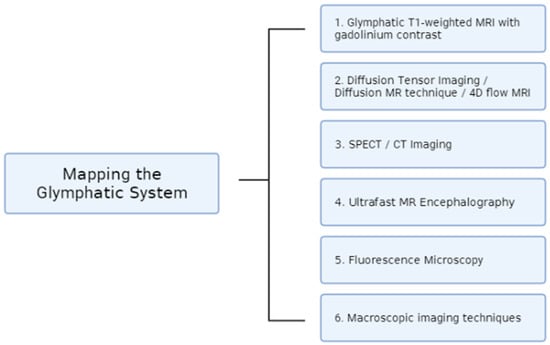
Figure 1
Highly Accessed Articles
Latest Books
E-Mail Alert
News
Topics
Topic in
Environments, IJMS, Toxins, JoX, Metabolites, J
Environmental Toxicology and Human Health, 2nd Volume
Topic Editors: Esref Demir, Sam KacewDeadline: 31 December 2025

Conferences
Special Issues
Special Issue in
J
Herbal Medicines: Current Advances and Clinical Prospects
Guest Editor: James AdamsDeadline: 30 June 2024
Special Issue in
J
Integrating Generative AI with Medical Imaging
Guest Editors: Shunxing Bao, Peng ZhangDeadline: 31 August 2024
Special Issue in
J
Feature Papers of J—Multidisciplinary Scientific Journal in 2024
Guest Editor: James AdamsDeadline: 31 December 2024


